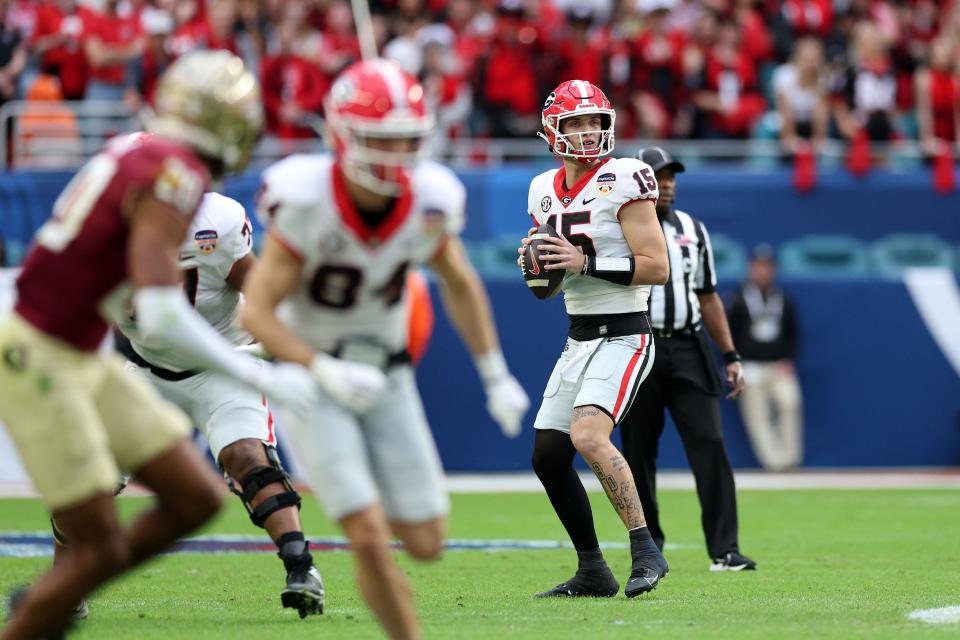Athletes score big victory in $2.8 billion NCAA settlement, but it's not a win-win | Bohls
The scoreboard never lies.
While some might portray the $2.77 billion settlement of federal antitrust lawsuits against the NCAA and schools as a win-win for all, that’s not necessarily the case.
The fallout from this watershed moment won’t have equal consequences for all.

Who came out as winners in this settlement?
College athletes clearly won. Athletes as far back as 2016 will get back pay for being unfairly deprived of name, image and likeness opportunities. Running back D’Onta Foreman and left tackle Connor Williams, a couple of Longhorns who were FWAA All-Americans that year, will profit.
The NCAA won. Sort of. That body at least survives for the moment, but stay tuned because the major players are always on the brink of going out on their own.
Big-time college football powers won because they can afford it. The Power Four leagues will have to pay only 40% of the bill, which seems grossly unfair to the lesser conferences. Remember, the SEC and Big Ten worked out a deal to earn a disproportionate 29% of the College Football Playoff money, whereas the ACC gets only 17% and the Big 12 just 15%.
Major college sports won. With all or most athletes probably participating in a separate, new revenue-sharing model in 2025 with about $20 million a year per school but also allowed to profit off continued NIL deals, more of them will are likely to stay in school longer and improve the product rather than heading out as fast as they can to the professional ranks.
Some sports beyond college football and basketball — I’m thinking baseball, golf and tennis in particular — will grow with larger rosters.
Lawyers always win.
More: How Texas golf is the host of the NCAA championships on a course 1,300 miles away | Bohls

Who came out as losers in this deal?
But there are clearly losers.
The 22 non-football playing conferences and Group of Five schools take it in the shorts since they will owe 60% of the tab, a wildly disproportionate and unfair outcome.
The nonrevenue, or Olympic, sports undoubtedly will suffer as many schools will struggle to foot the bill and have to pay more to stay afloat, necessitating cutbacks somewhere.
Amateurism is dead. And probably has been for 30 years or longer.
The CFP chances will shrink for some because many teams’ resources will be more depleted.
High school seniors will lose. With college upperclassmen staying in school longer, there will be fewer scholarship spots open for them at the major programs. Except at Clemson since Dabo Swinney doesn’t take transfers.
Texas AD Chris Del Conte: 'Adapt or die'
This represents monumental change for all of college athletics, and it's undoubtedly more punitive for some than others. As Texas athletic director Chris Del Conte told me this week, “It’s a stressful time and an evolving landscape. You either have to adapt or die.”
And some things almost assuredly will die.
This article originally appeared on Austin American-Statesman: How $2.77 billion NCAA settlement will impact college athletics

